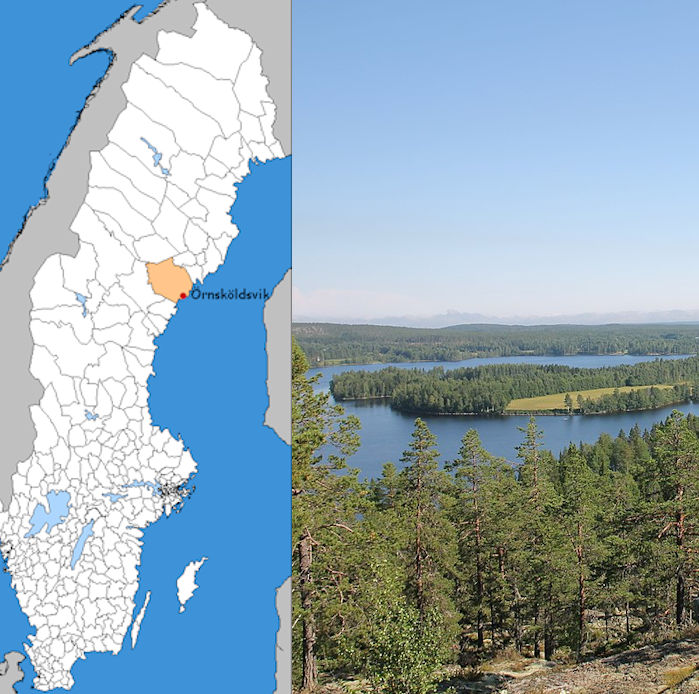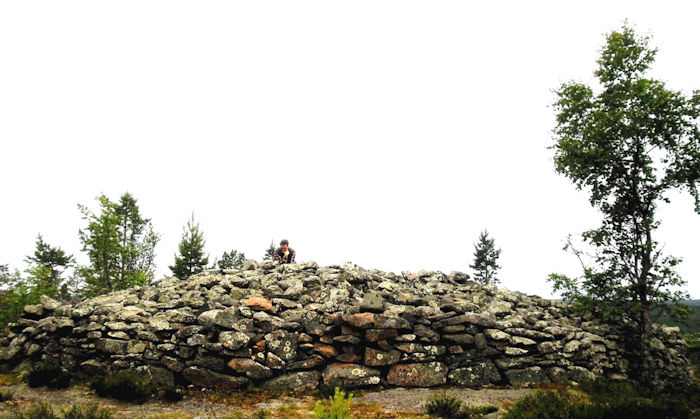Spir Mountain Cairns: Prehistoric Ancient Monuments To The Dead In Northern Sweden
Ellen Lloyd - AncientPages.com - In Northern Sweden, there are many fascinating and mysterious ancient sites and places.
Unfortunately, several of these historical sites have not been properly investigated because they are very difficult to access. Due to their remote location, they are also little known to their outside world.
Left: Location of Örnsköldsvik Municipality in Sweden. Credit: Fred J - CC BY-SA 2.5 - Right: Byviken, Örnsköldsvik Municipality. Credit: Sasja - CC BY-SA 3.0
The Ritual Use Of Cairns
The tradition of building cairns and stone settings in the coastal area is generally ascribed to the Bronze Age and Iron Age. Cairns and cairn-like monuments can be found in many different parts of Sweden, Norway, and Finland. In the city of Örnsköldsvik in Norrland, we come across some of the best prehistoric monuments that Sweden has to offer – the Spir Mountain cairns.
Many of the cairns were constructed near or overlooking what was once the seashore. They are standing about 30-50 meters above present sea level. During the Bronze Age, the Spir Mountain had once been an island within a bay.
One can find many ancient cairns along the coast of Norrland. Our ancestors placed them all the way from northern Uppland to Piteå in Norrbotten, a distance of about 860 kilometers. The coastal cairn-zone in Ångermanland is particularly rich and includes about 700 registered sites. There are roughly over 2,300 cairns and stone settings distributed along the northern coast, but they are not represented at all in the interior of Norrland.
The discussion about the ritual use of cairns is vast. It is generally held that the use of Bronze Age cairns and cairn-like stone settings is similar to the ritual use of Bronze Age mounds, that is, they represent burial monuments raised over individual persons.
Ancient cairns were of religious importance to our ancestors. It was believed that by frequently rebuilding the cairns and placing bones inside them, these ancient monuments would become active and enable communication with higher powers. Many of the cairns contain cremation burials and this indicated they appear to have been built as monuments to the dead.
Norrland is famous for its beautiful Northern Lights, but there are also many interesting archaeological sites here. Credit: Pavel.shyshkouski - CC BY-SA 4.0
A widely held suggestion concerning the underlying motives behind religious sacrifices, ritual ceremonies and festivals, is the attempt to maintain and support the existing "world-view" or "cosmological" order within a society or group over time.
The sacrificial rituals may vary from one society to another, but the motives are generally to receive luck, prosperity, forgiveness, stability, safety, fertility, etc., from the higher powers of both ancestors and gods.
It is reasonable to suggest that the ritual use of the cairn-monuments also aimed at creating contact between the living society and the spirits of the ancestors. In this practice, the cairns and stone settings became a medium through which contact with the ancestral spirits could be channeled.
Some researchers also suggest the cairns functioned as tribal markers for family group territories.
The Discovery Of Two Very Large, Well Preserved And Almost Perfectly Circular Cairns
Some years ago, archaeologists discovered two astonishing cairns in Ångermanland. The larger of the cairns is 13m in diameter. It is exceptionally well preserved, and almost perfectly circular. The stone required for construction must have required an immense investment of labor. The smaller cairn is just to the east and is 6m in diameter.
The Spir Mountain cairns have internal burial chambers with cists containing skeletal remains, accompanied by various grave goods. In some cases, the cairns have been used repeatedly, and have been expanded out from their original structures.
Archaeologist Carl L. Thunberg at the larger of the Spir Mountain Cairns. Credit: Ångermanlands fornminnesförening - CC BY-SA 4.0
The cairn-building tradition was widespread in Northern Sweden and the existence of cairns along the coast could possibly reveal different cultural and economical systems between the Bronze Age people. The social and economic structure in Bronze Age Norrland has by several archaeologists been viewed as u dualism between the coast and the inland area.
Scientists say there was an egalitarian structure with hunter-gatherers in the interior of Norrland and a more complex and socially stratified order with "ranked" farmers buried in cairns along the coast. The cairn-building tradition is, undoubtedly, one of the more evident material differences between interior and coast in Bronze Age Norrland.
Written by Ellen Lloyd – AncientPages.com
Copyright © AncientPages.com All rights reserved. This material may not be published, broadcast, rewritten or redistributed in whole or part without the express written permission of AncientPages.com
Expand for referencesActivating the Monuments - The Ritual Use of Cairns in Bronze Age Norrland by Hans Bolin
More From Ancient Pages
-
 Unique Miniature Roman Gold Lock Smaller Than A One-Euro Coin Discovered In Germany
Archaeology | Jan 31, 2025
Unique Miniature Roman Gold Lock Smaller Than A One-Euro Coin Discovered In Germany
Archaeology | Jan 31, 2025 -
 Millennia-Old Sumerian Tripod Vase Dedicated To God Ningirsu, The Son OF Enlil
Archaeology | Oct 6, 2016
Millennia-Old Sumerian Tripod Vase Dedicated To God Ningirsu, The Son OF Enlil
Archaeology | Oct 6, 2016 -
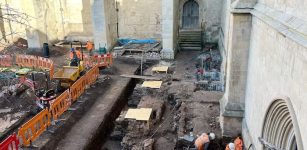 Ancient Roman Street And Buildings Discovered Beneath Exeter Cathedral
Archaeology | Apr 4, 2023
Ancient Roman Street And Buildings Discovered Beneath Exeter Cathedral
Archaeology | Apr 4, 2023 -
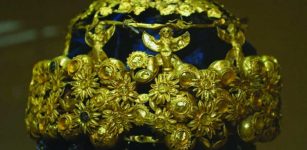 Long-Lost Mesopotamian Queen Hama Discovered By Student Just By Reading Books
Archaeology | Feb 14, 2019
Long-Lost Mesopotamian Queen Hama Discovered By Student Just By Reading Books
Archaeology | Feb 14, 2019 -
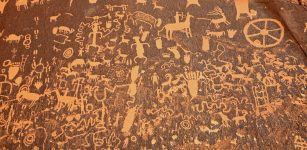 Newspaper Rock Art: Ancient Indian Petroglyphs Tell 2,000-Year-Old Story Of Utah
Civilizations | Nov 28, 2018
Newspaper Rock Art: Ancient Indian Petroglyphs Tell 2,000-Year-Old Story Of Utah
Civilizations | Nov 28, 2018 -
 The Maya Produced Rubber 3,000 Years Before Goodyear
Ancient History Facts | Mar 12, 2016
The Maya Produced Rubber 3,000 Years Before Goodyear
Ancient History Facts | Mar 12, 2016 -
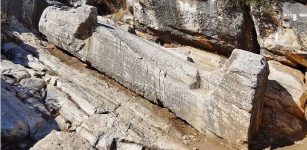 Enigma Of Giant Statue Of Kouros Of Apollonas
Featured Stories | Jul 18, 2019
Enigma Of Giant Statue Of Kouros Of Apollonas
Featured Stories | Jul 18, 2019 -
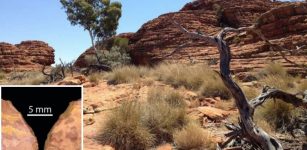 Evidence People Lived In Australian Desert 50,000 Years Earlier Than Previously Thought
Archaeology | Sep 22, 2018
Evidence People Lived In Australian Desert 50,000 Years Earlier Than Previously Thought
Archaeology | Sep 22, 2018 -
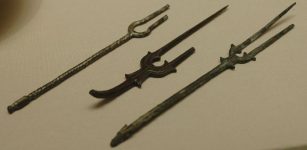 Troublesome Ancient History Of Forks That Were Long A Shocking Sensation
Featured Stories | Nov 20, 2023
Troublesome Ancient History Of Forks That Were Long A Shocking Sensation
Featured Stories | Nov 20, 2023 -
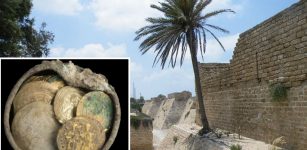 Rare Gold Coins And Treasures Linked To Crusaders’ Conquest Of Caesarea – Discovered
Archaeology | Dec 4, 2018
Rare Gold Coins And Treasures Linked To Crusaders’ Conquest Of Caesarea – Discovered
Archaeology | Dec 4, 2018 -
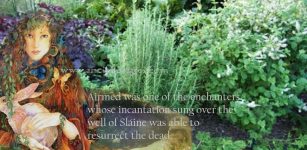 Airmid: Irish Goddess Of Healing And Herbs And One Of The Tuatha Dé Danann
Celtic Mythology | Feb 2, 2018
Airmid: Irish Goddess Of Healing And Herbs And One Of The Tuatha Dé Danann
Celtic Mythology | Feb 2, 2018 -
 Curse Of The Scottish Fyvie Castle That Survived Generations
Featured Stories | May 5, 2020
Curse Of The Scottish Fyvie Castle That Survived Generations
Featured Stories | May 5, 2020 -
 Mystery Of The Lost Biblical Kadesh Where Moses Was Punished By God
Biblical Mysteries | Oct 17, 2017
Mystery Of The Lost Biblical Kadesh Where Moses Was Punished By God
Biblical Mysteries | Oct 17, 2017 -
 Weapons Of Ancient Aztec Warriors Of Mesoamerica
Featured Stories | Mar 23, 2017
Weapons Of Ancient Aztec Warriors Of Mesoamerica
Featured Stories | Mar 23, 2017 -
 Selah – Mysterious Biblical Word Of Unknown Meaning
Biblical Mysteries | Jan 5, 2018
Selah – Mysterious Biblical Word Of Unknown Meaning
Biblical Mysteries | Jan 5, 2018 -
 Unique 17th Century Sunken Swedish ‘Bodekull’ Ship – Identified
Archaeology | Jun 24, 2017
Unique 17th Century Sunken Swedish ‘Bodekull’ Ship – Identified
Archaeology | Jun 24, 2017 -
 Remote North Atlantic Islands Were Settled By An Unknown Group Of Humans Centuries Earlier Than Thought
Archaeology | Dec 27, 2021
Remote North Atlantic Islands Were Settled By An Unknown Group Of Humans Centuries Earlier Than Thought
Archaeology | Dec 27, 2021 -
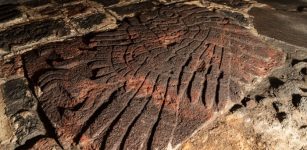 Huge Golden Eagle Relief Made By The Aztecs Discovered At Tenochtitlan
Archaeology | Feb 3, 2021
Huge Golden Eagle Relief Made By The Aztecs Discovered At Tenochtitlan
Archaeology | Feb 3, 2021 -
 Huge Viking Burial Discovered Beneath Streets Of Dublin
Archaeology | Aug 6, 2014
Huge Viking Burial Discovered Beneath Streets Of Dublin
Archaeology | Aug 6, 2014 -
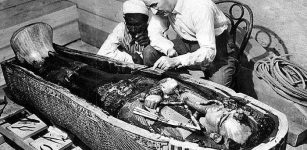 On This Day In History: King Tut’s Tomb Is Unsealed And Opened – On Feb 16, 1923
News | Feb 16, 2017
On This Day In History: King Tut’s Tomb Is Unsealed And Opened – On Feb 16, 1923
News | Feb 16, 2017

